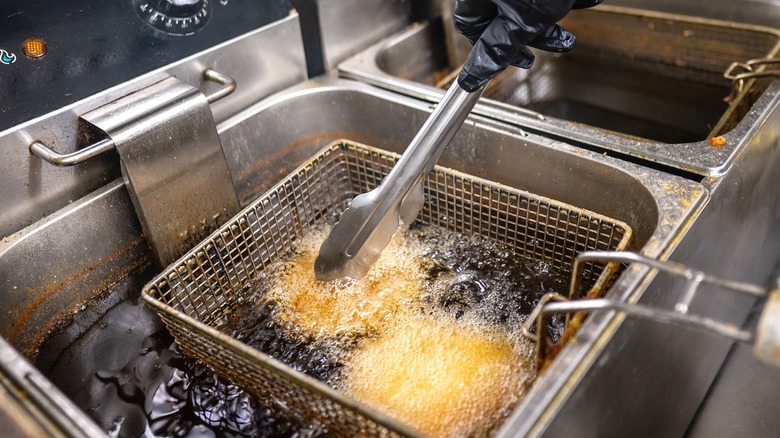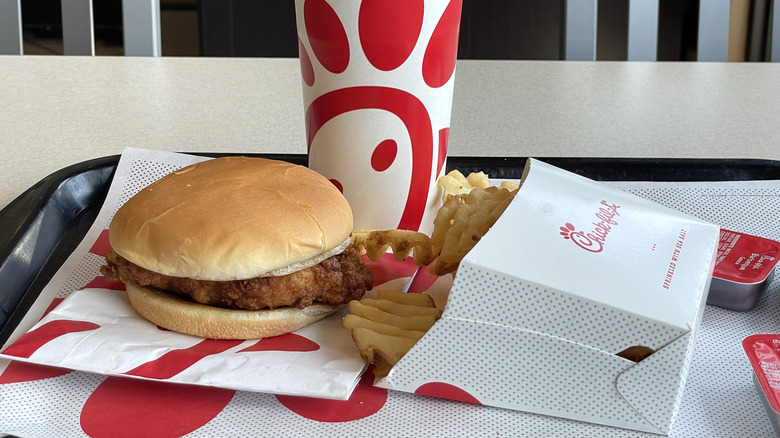What Oil Is Really In Chick-Fil-A's Fryer? Turns Out, It Depends On What You Order
Chick-fil-A's famous waffle fries and crispy chicken sandwich are in a league of their own — it makes you wonder what really goes into frying such crispy delights. Ask most people, and they'll probably guess peanut oil, since that's what Chick-fil-A uses to fry its signature breaded chicken. Chick-fil-A has used it for decades, and the choice is intentional. Peanut oil has a high smoke point and mild flavor that lets the seasoning on the chicken stand out while still delivering that signature golden crunch. But when it comes to the waffle fries, instead of peanut oil, Chick-fil-A cooks its fries in canola oil.
Fast food restaurants primarily use blended vegetable oils for their fries, most commonly canola oil, soybean oil, corn oil, or cottonseed oil due to their neutral flavor and high smoke point, which are essential for deep-frying. Canola oil is particularly mild and versatile, making it perfect for fries. It allows the natural potato flavor to shine through and prevents the cross-flavoring that would happen if fries shared the fryer with chicken. It may seem extra, but it is a nice little touch that tells you how far Chick-fil-A is willing to go to cater to its customers.
Even if you want to turn your Chick-fil-A sandwich into a saucy delight, the chicken stays flavorful and distinct, and the fries remain crisp and potato-forward. It's a behind-the-scenes choice that most people don't notice, but it makes all the difference in taste. Customers get exactly what they expect, and they can wash their savory meal down with Chick-fil-A's signature lemonade.
Why Chick-fil-A uses different frying oils
What makes Chick-fil-A's oil choices notable is how the company doesn't try to cut corners behind the scenes, and it doesn't mind going the extra mile to ensure optimal and consistent flavors across the menu. Some foods require different cooking times and temperatures, and having separate fryers can prevent these characteristics from clashing. In particular, seafood can transfer its taste and smell to other foods if they're cooked in the same fryer (thankfully, this isn't a concern at Chick-fil-A).
Cooking everything in the same vat of oil would keep costs down and simplify the kitchen, but it would also mean that flavors and even potential allergens, such as gluten or nuts, could migrate between foods. By giving its waffle fries their own canola oil fryers, Chick-fil-A sidesteps these pitfalls. Customers get fries that taste purely like potatoes rather than fried chicken, and the risk of cross-flavoring or unintended contact with breaded items is reduced. It's a subtle operational choice, but it speaks to Chick-fil-A's brand identity. Rather than taking a "one vat fits all" approach, Chick-fil-A invests in separation, making sure each part of the meal delivers the flavor it's meant to.


